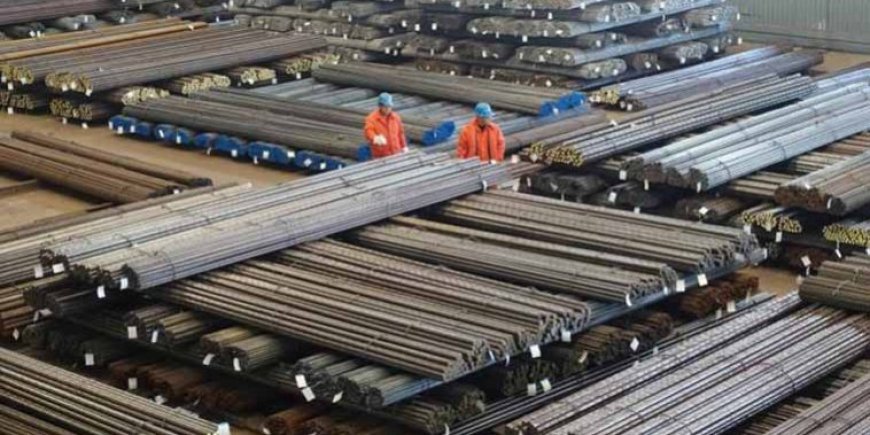Factors Influencing Price of Steel Per Kg in India
The price of steel per kilogram in India is influenced by a complex combination of global and domestic factors.

As of today, the price of steel per kg in India is determined by a variety of factors that collectively shape its market value. Steel, an essential material in industries such as construction, infrastructure, and manufacturing, experiences price fluctuations based on both global and domestic influences. Understanding the key factors behind steel pricing is critical for businesses and consumers looking to make informed decisions.
Raw Material Costs: The Backbone of Steel Pricing
The cost of raw materials, particularly iron ore and coking coal, is one of the most significant factors influencing steel prices. Iron ore is the primary ingredient in steel production, and its price is largely determined by global supply and demand conditions. For instance, disruptions in major iron ore-producing countries like Australia or Brazil can lead to reduced supply, driving up prices. Additionally, shifts in demand from large steel-consuming nations such as China can further impact iron ore costs. When the price of iron ore rises, steel manufacturers face higher production costs, which are ultimately passed on to consumers in the form of increased steel prices.
Similarly, coking coal, used in the blast furnace process to produce steel, is another critical component in steelmaking. Variations in coking coal prices due to supply chain challenges or rising global demand can lead to increased production costs for steel manufacturers, which directly impacts the price of steel in the market.
Domestic Demand and Regional Price Variations
Domestic factors also play a vital role in determining the price of steel per kg in India. The construction and infrastructure sectors are the largest consumers of steel, and their demand is shaped by broader economic conditions, government-driven infrastructure projects, and seasonal trends. For example, during periods of high construction activity, such as before the monsoon season or around festive periods, the demand for steel rises sharply. This increased demand puts upward pressure on prices. On the other hand, during economic slowdowns or when construction activity decreases, demand for steel may fall, leading to more stable or even lower prices.
Regional variations within India contribute to price differences across the country. Steel prices can vary significantly based on local market conditions, such as transportation costs and the level of construction activity. In regions with substantial construction or infrastructure projects, steel prices may be higher due to increased local demand. Additionally, areas with higher transportation costs may experience elevated steel prices as logistical expenses contribute to the overall cost. Conversely, in regions with less construction or more efficient transportation infrastructure, prices may be more stable or lower.
Production Costs and Government Regulations
Steel production involves multiple stages, including ore extraction, smelting, and refining, all of which incur substantial costs. Any increase in production costs due to rising energy prices, higher labor costs, or investments in new technologies directly influences steel prices. For example, if energy prices rise, the cost of running the equipment needed for steel production increases, which in turn drives up the final price of steel. These increased costs are typically passed on to consumers.
Government policies and regulations also have a considerable impact on steel prices. Changes in tariffs on raw materials, such as iron ore and coking coal, can affect production costs. For instance, higher tariffs on imported iron ore or coking coal lead to increased costs for steel manufacturers, which result in higher prices for consumers. Similarly, stricter environmental regulations may require manufacturers to invest in cleaner, more sustainable technologies, which can also increase production costs. These regulatory changes, whether aimed at protecting the environment or boosting domestic industries, play a significant role in shaping the steel market.
Seasonal Trends and Their Impact on Steel Prices
Seasonal factors also influence the price of steel per kg, particularly in a country like India, where construction activity is affected by the monsoon season. Demand for steel typically peaks before the monsoons, when construction projects are at their height, and during festive periods when infrastructure projects gain momentum. This surge in demand can lead to a temporary spike in steel prices. Conversely, during the monsoon season, when construction slows down due to weather conditions, demand for steel often decreases, leading to more stable or lower prices.
Conclusion
In summary, the price of steel per kilogram in India is influenced by a complex combination of global and domestic factors. Raw material costs, particularly for iron ore and coking coal, play a critical role in determining steel prices, while domestic demand, regional variations, and production costs further shape the market. Government policies, seasonal trends, and transportation costs also contribute to price fluctuations. For businesses and consumers alike, understanding these dynamics is essential for anticipating price changes and making informed purchasing decisions.
For more related information on steel products, visit our website www.steeloncall.com or you can contact us at our toll free number: 18008332929.
What's Your Reaction?













![Tranquil Blend CBD Gummies [Price UPDATED 2024] - Cost Solves](https://news.bangboxonline.com/uploads/images/202412/image_430x256_676d404cc1dc0.jpg)












